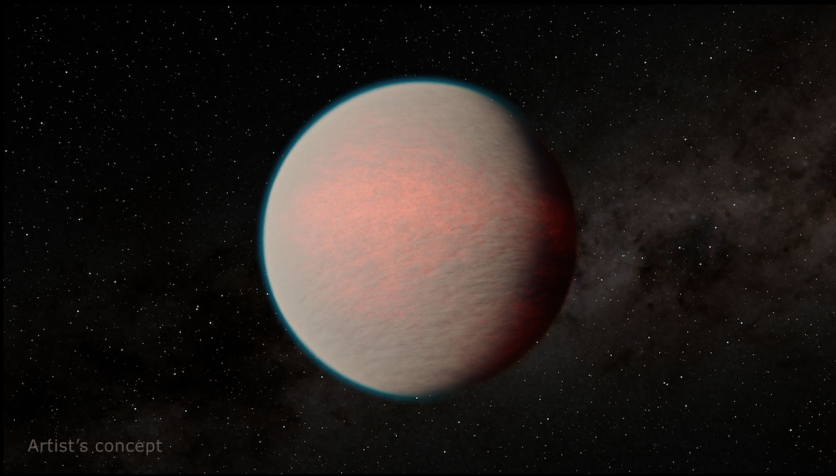The NASA James Webb Space Telescope has provided astronomers with an unprecedented glimpse of a distant exoplanet, shedding light on the enigmatic nature of this mysterious world.
This distant world, known as GJ 1214 b, belongs to the category of "mini-Neptunes," a class of planets that differ significantly from those found within our solar system.

A Mysterious Mini-Neptune
Unlike anything previously observed, GJ 1214 b appears to possess a highly reflective surface and a steamy atmosphere, making it a fascinating subject of study.
Although the planet's scorching temperatures render it inhospitable to liquid-water oceans, scientists speculate that water vapor may play a significant role in its atmospheric composition.
Eliza Kempton, a researcher at the University of Maryland and lead author, highlights the planet's unique features, noting its total enshrouding by a haze or cloud layer.
Researchers adopted an innovative approach to overcome the challenges posed by GJ 1214 b's thick atmosphere. In addition to traditional observations, they tracked the planet's movements throughout its orbit around its host star.
This comprehensive analysis, made possible by the James Webb Space Telescope's Mid-Infrared Instrument (MIRI), unveiled crucial details about the planet's atmospheric dynamics.
The observations revealed significant temperature variations between the planet's day and night sides, indicating the presence of heavier molecules such as water or methane in its atmosphere. This finding challenges previous assumptions about mini-Neptune exoplanets' composition and thermal properties.
"The ability to get a full orbit was really critical to understand how the planet distributes heat from the day side to the night side," Kempton said. "There's a lot of contrast between day and night. The night side is colder than the day side."
Mini-Neptunes, like GJ 1214 b, represent the most common type of planet in the galaxy, yet they remain shrouded in mystery due to their absence from our solar system. While recent measurements have shed some light on their characteristics, much remains unknown about these distant worlds.
Read Also : NASA's James Webb Space Telescope Will Look for Signs of Life in New 7 Earth-sized Planets Around TRAPPIST-1
"A Consistent Story"
Rob Zellem, an exoplanet researcher at NASA's Jet Propulsion Laboratory, underscores the significance of the new observations, emphasizing their potential to advance our understanding of planetary climates and atmospheric physics.
The research suggests that GJ 1214 b may have originated farther from its host star before gradually spiraling inward to its current position. However, further observations will be required to fully unravel the planet's formation history and atmospheric composition.
Kempton said in a statement, "The simplest explanation, if you find a very water-rich planet, is that it formed farther away from the host star."
"By observing a whole population of objects like this, hopefully we can build up a consistent story."
Related Article : NASA's Hubble Space Telescope Captures 'Butterfly Nebula' In Stunning Motion | Fun Facts About This Beautiful Space Butterfly

![Apple Watch Series 10 [GPS 42mm]](https://d.techtimes.com/en/full/453899/apple-watch-series-10-gps-42mm.jpg?w=184&h=103&f=9fb3c2ea2db928c663d1d2eadbcb3e52)



